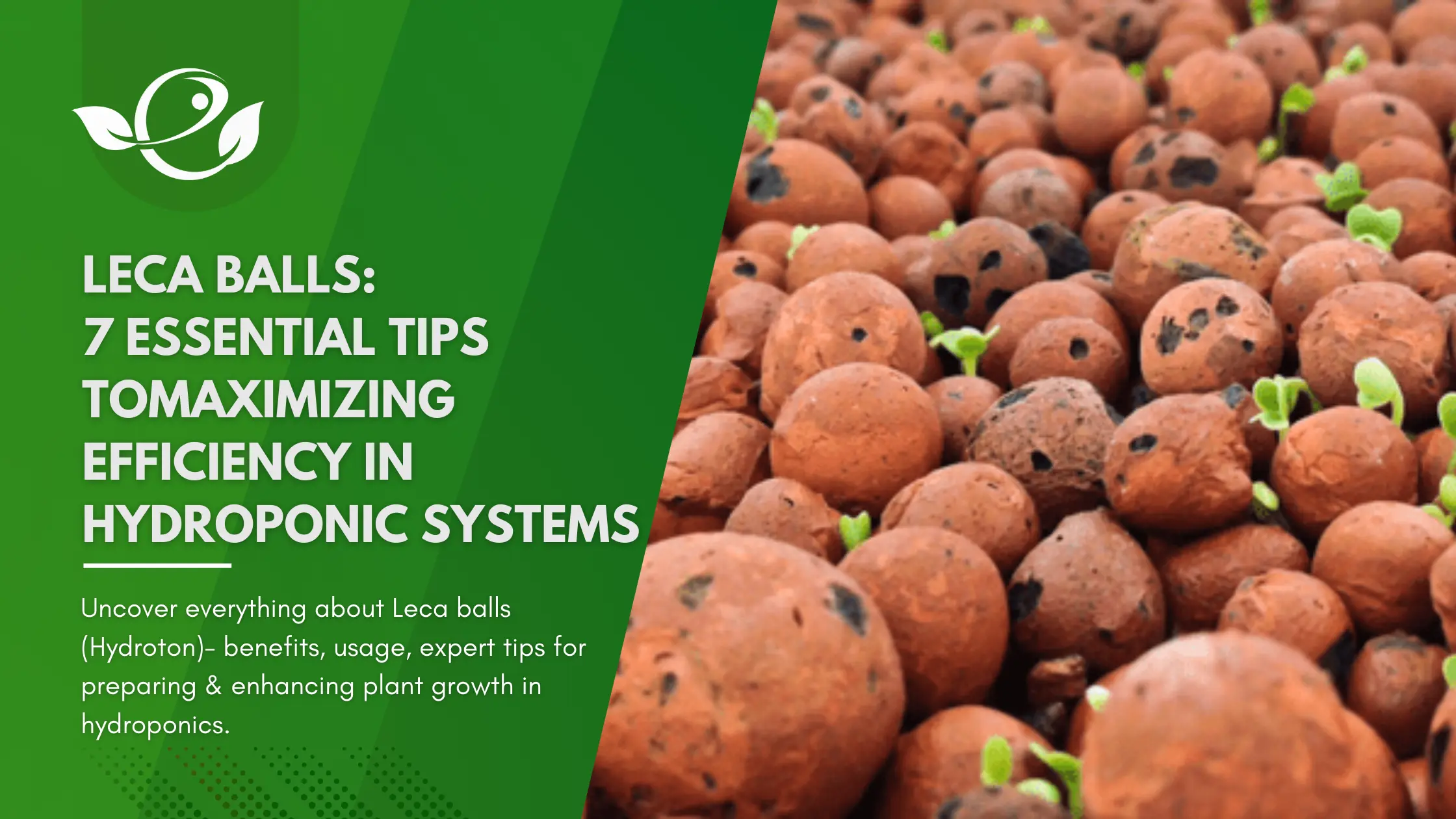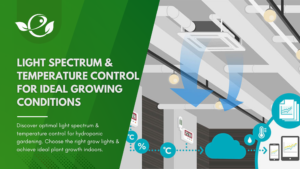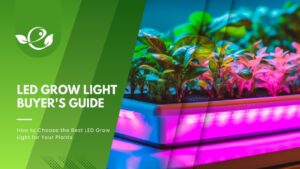Table of Contents
Leca balls, also known as Hydroton or lightweight expanded clay aggregate, serve as an innovative soil replacement in hydroponic gardening, offering a unique solution for growing indoor plants with efficiency. Made from fired clay, brick dust, and waste from the mineral albite, these small clay balls undergo a high-temperature kiln process, expanding five times their original size, which enhances their porous nature to support superior aeration and drainage. The evolution of Leca balls from a 1930s building material to a cornerstone of hydroponic systems underscores their versatility and aesthetic appeal, especially for indoor plant enthusiasts seeking optimal growing conditions.
As the demand for sustainable and effective indoor gardening solutions grows, Leca balls have emerged as a key player in hydroponics and aquaponics, known for their ability to facilitate root aeration and moisture retention. Their manufacturing process, although cloaked in some mystery regarding the pre-treatment of natural clay, results in a product that is both effective for plant growth and appealing for home décor. This article will guide readers through the essentials of using Leca balls in hydroponic systems, from preparation to maintenance, ensuring both beginners and experienced gardeners can maximize their efficiency and success in growing healthy, vibrant indoor plants.
What is Hydroton?
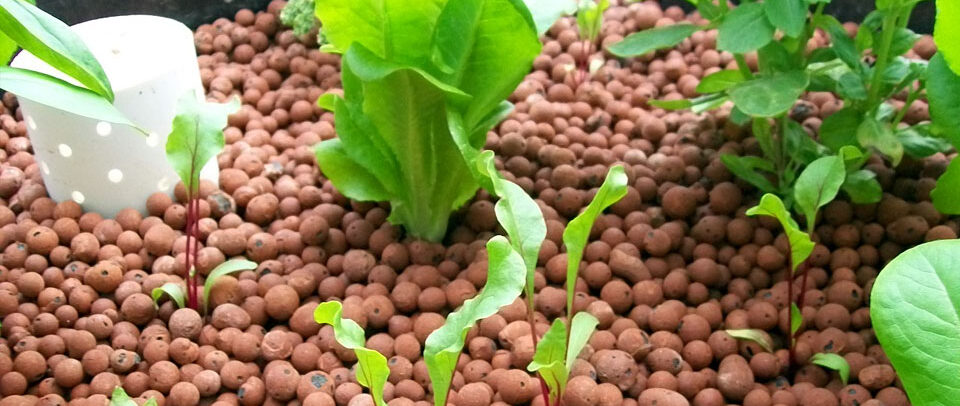
Hydroton Defined
Hydroton, also known as clay pebbles or LECA (Light Expanded Clay Aggregate), consists of small, marble-sized clay pellets. These pellets are used predominantly as a hydroponic substrate due to their numerous beneficial properties.
Composition and Manufacturing
These clay pebbles are created by heating natural clay to over 2,000 degrees Fahrenheit. This process causes the clay to expand and form marble-sized units filled with tiny air bubbles, making them both lightweight and porous. The majority of quality clay pebbles are produced in Germany, where they are fired in kilns at extremely high temperatures to achieve the desired level of porosity and absorbency.
Characteristics and Applications
These expanded clay aggregates are not only used for their ability to retain moisture and increase aeration but also for providing reliable drainage and creating an environmentally friendly growing medium.. Their balanced capillary action and ideal surface structure make them suitable for a variety of applications, including hydroponic and aquaponic systems.
Usage in Hydroponic Systems
In hydroponic setups, Hydroton can be utilized either on its own or mixed with other growing media. It is particularly favoured by small producers using media bed or Dutch bucket techniques. This preference stems from Hydroton’s lightweight nature, ease of transplanting and harvesting, and its gentle properties that are easy on the hands.
Brand and Market Presence
Leca Balls is a recognized brand of expanded clay pebbles offered by Mother Earth, a division of Sunlight Supply. This brand, among others, represents a common type of medium found in various hydroponic and soilless grow setups.
Benefits of Using Hydroton
Improved Plant Growth Conditions
- Water and Nutrient Efficiency: Its excellent water-holding capacity, when used in a 30% Hydroton to 70% soil mixture, optimizes moisture availability to plants. This property, combined with its ability to maintain a consistent nutrient solution, ensures that plants receive a steady supply of water and nutrients, enhancing growth.
- Enhanced Drainage and Aeration: Placing these clay pebbles at the bottom of containers improves drainage, preventing waterlogging and associated root diseases Its porous structure not only prevents overwatering by allowing excess water to drain away but also enhances oxygen levels around the roots, promoting healthier plant growth.
- Root Health and Disease Prevention: The sterile nature of this growing media ensures it is free from pests and diseases, providing a clean growing medium that significantly reduces the risk of plant diseases. Additionally, the improved airflow and stable pH levels help in maintaining healthy root systems.
Sustainability and Usability
- Reusability and Cost-Effectiveness: The clay pebbles can be cleaned and reused multiple times, which is not only cost-effective but also reduces waste, making it a sustainable choice for gardening enthusiasts.
- Ease of Use: Due to its lightweight nature and the fact that it is not compact, it is easy to handle and ideal for various hydroponic systems, making it a versatile option for many gardeners.
- Environmental Benefits: Made from abundant clay, Hydroton is an environmentally friendly option. It supports sustainable gardening practices by reducing the need for soil amendments and minimizing pest problems, which often require chemical treatments.
Versatility and Stability
- Wide Applicability: Its characteristics make it suitable for a range of hydroponic setups including NFT, drip systems, and more, proving its versatility across different planting methods.
- pH and Moisture Stability: Clay pebbles maintain a neutral pH which is crucial for nutrient uptake in hydroponic systems. Its ability to regulate moisture and provide a balanced nutrient supply makes it an excellent medium for plant growth.
By integrating these clay pebbles into their gardening practices, growers can achieve more efficient water use, enhanced plant health, and sustainability, all of which contribute to the success of hydroponic systems.
Preparing Hydroton for Use
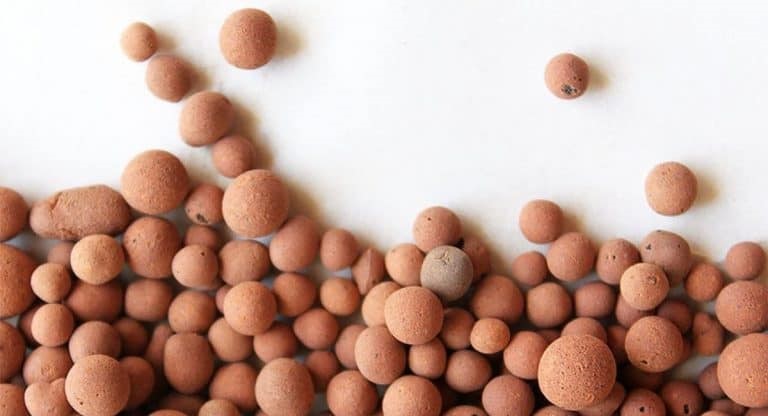
Initial Cleaning and Soaking
- Rinse Thoroughly: Begin by rinsing the leca-balls to remove any dust and debris that may be present from the manufacturing process. This is crucial as it prevents the clogging of the hydroponic system.
- Soaking: After rinsing, soak the Leca-balls in pH-adjusted water for at least six hours, or ideally up to 24 hours. This step ensures the clay pebbles are fully saturated, which aids in preventing air pockets around the plant roots.
Disinfecting and pH Stabilization
- Disinfecting: To eliminate any potential pathogens, soak the pebbles in a solution of hydrogen peroxide mixed with water. This helps in killing off any bacteria or fungus that might harm the plants.
- pH Testing and Adjustment: After disinfecting, it’s important to test and adjust the pH level of the Leca-balls. This ensures that the pebbles do not alter the pH balance of the nutrient solution, which is vital for plant health.
Preparation for Reuse
- Cleaning After Each Cycle: Clean the pebbles thoroughly between growing seasons to remove organic material or salt buildup from the nutrients used in the previous cycles.
- Drying: Spread the cleaned Balls out to dry completely before storing or using them in another grow setup. This prevents mould and mildew from developing.
- Storage: Store the dry Hydroton in a cool, dry place until ready for the next use. Proper storage helps in maintaining the quality and effectiveness of the pebbles for future planting sessions.
By following these steps, gardeners can prepare their pebbles effectively, ensuring a healthy environment for plant growth and maximizing the efficiency of their hydroponic system.
7 Tips on Growing with Hydroton
1. Optimal Water and Nutrient Management
- Regular Rinsing: To prevent nutrient buildup, occasionally rinse plants and Hydroton, ensuring a clean and efficient growing environment.
- Nutrient Addition: After each rinsing, add a small amount of nutrients to replenish what was washed away, maintaining a balanced nutrient profile essential for plant growth.
2. System Recommendations
- System Compatibility: Employ it in ebb-and-flow or drip systems to leverage its benefits effectively. These systems complement pebble’s properties by facilitating regular irrigation and nutrient delivery.
3. Maintenance Practices
- Periodic Rinsing: Rinse clay pebbles periodically to manage the Cation Exchange Capacity (CEC) value, preventing spikes that could affect plant health.
- Use of Fresh Water: Always use fresh water with a balanced pH when rinsing to maintain the structural integrity and effectiveness of Hydroton.
4. Combining Media for Enhanced Growth
- Integration with Other Media: Combine these with more absorbent media like Rockwool or Coco Coir. This combination ensures that roots receive all necessary nutrients, especially in systems where clay pebbles alone might not suffice.
5. pH Management
- Monitoring pH Levels: Regularly measure and adjust the pH of your nutrient solution to ensure it complements the naturally pH-neutral nature of clay balls, supporting optimal plant growth.
6. Structural Support
- Supportive Framework: Use Leca in a net cup or pot to provide structural support for the plant’s root system. It can be used with or without a net cup, or added to soil to enhance drainage.
7. Aeration and Root Health
- Enhanced Root Aeration: The porous nature and the spaces between the Hydroton pebbles increase aeration of the root zone, reducing the risk of root rot and promoting healthier root systems.
Common Mistakes to Avoid
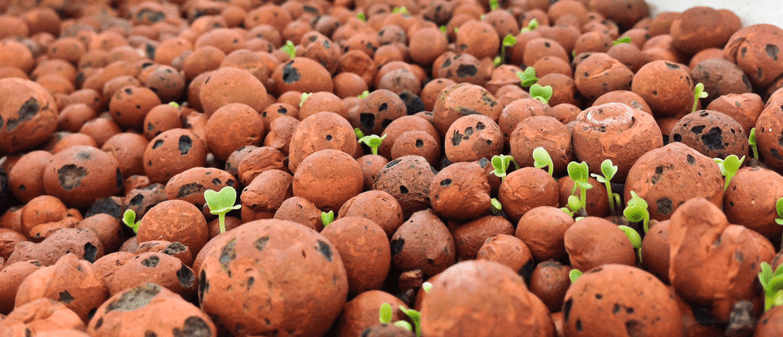
Inadequate Cleaning of Clay pebbles
- Residual Build-Up: Failing to clean Clay pebbles thoroughly between growing seasons can lead to the accumulation of organic materials and salts, which may block the pores of the pebbles and disrupt the next growing cycle. It is recommended to clean these pebbles using isopropyl alcohol followed by rinsing with pH-balanced water to ensure they are free from residues.
Incorrect Container Size
- Pot Size Matters: Utilizing larger pots for hydroton can be detrimental due to their limited water absorption capabilities. Smaller containers are preferable as they ensure a more even distribution of nutrients, which promotes healthier root systems.
Neglecting pH Balance
- pH Monitoring: Overlooking the importance of maintaining the correct pH level can lead to nutrient deficiencies or plant fatalities. It’s crucial to check pH levels daily and adjust them promptly if they deviate from the ideal range.
Lighting Issues
- Lighting Quality: Opting for cheap or incorrect lighting can severely affect plant growth. It’s essential to invest in the right type of lighting that matches the specific needs of the plants in your hydroponic garden.
Using Inappropriate Plant Food
- Fertilizer Compatibility: Using conventional fertilizers in hydroponic systems can lead to clogging issues. Hydroponic-specific fertilizers, either in liquid or granular form, are designed to dissolve properly and provide the necessary nutrients without causing blockages.
Lack of Sanitation
- Cleanliness is Key: Neglecting sanitation can invite diseases into your hydroponic garden. Regular cleaning of the floors, sterilization of equipment, and proper disposal of plant waste are essential to maintain a healthy growing environment.
Educational Shortcomings
- Knowledge Investment: Skipping the learning process and not researching before setting up a hydroponic system can hinder your success. Taking the time to understand modern hydroponic techniques and planning accordingly is vital for achieving a fruitful harvest.
Water Retention and Floatation Issues with Leca
- Hydration and Stability: Leca balls have poor water retention, which might lead to drying out of crops if not watered adequately. Additionally, Leca balls can float in the system during initial use until they are fully saturated, potentially causing blockages in filters or drainage systems.
Maintenance and Reuse of Hydroton
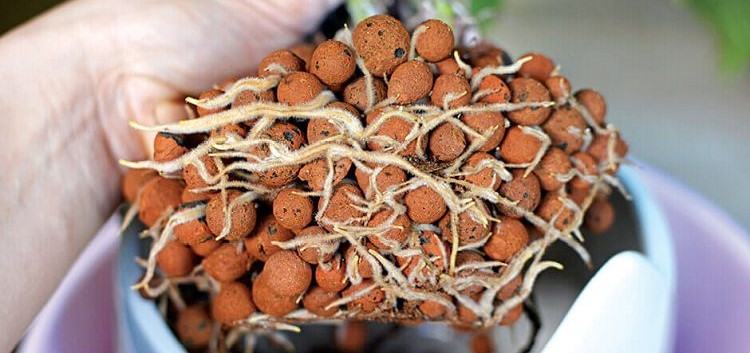
Cleaning Hydroton
- Basic Rinsing and Disinfecting: Start by rinsing Leca-balls under hot water to remove loose debris. Soak the pebbles in a hydrogen peroxide solution, then add bleach and let them sit for another day. A final rinse ensures they are clean before reuse.
- Colander Cleaning Method: Use a colander to rinse the Balls with tap water until the water runs clear. Soak the pebbles in a hydrogen peroxide solution for 15 minutes, then rinse again thoroughly.
- Extended Soaking: For deep cleaning, soak these clay pebbles in hot pH-adjusted water in a 44-gallon trash can for two days, agitate using a 5-gallon bucket, and then rinse.
- Boiling for Sterilization: Boil the clay pebbles for 20-30 minutes to eliminate any bacteria or fungus, followed by another thorough rinse to remove loosened debris.
Reusing Hydroton
- Cost Efficiency: Reusing Clay pebbles not only saves money but also reduces waste, making it a sustainable option for gardeners.
- Preparation for Reuse: After cleaning, let the pebbles dry completely. Then, soak them in a half-strength nutrient solution before reintroducing them to the system.
- Longevity and Durability: With regular cleaning, It can last several years without needing replacement, provided they are kept free from major salt deposits and organic buildup.
Storage and Handling Tips
- Proper Storage: Store dried Hydroton in a cool, dry place to maintain their quality and effectiveness for future use.
- Handling Precautions: Always handle Leca balls gently to maintain their structural integrity and avoid crushing the porous material.
Additional Maintenance Tips
- Removing Large Debris: Start by removing all roots and plant particles from the Hydroton to prevent decay and bacterial growth.
- Nutrient Salt Management: Regularly remove built-up nutrient salts to maintain the pH and electrical conductivity (EC) of your hydroponic system, which ensures optimal plant health.
- Pore Maintenance: Regular cleaning helps to reopen the pores of the pebbles, maintaining their essential capillary action for effective hydroponic growth.
Conclusion
Throughout this exploration of Hydroton, also known as Leca balls, we’ve delved into their composition, benefits, and practical applications within hydroponic systems. From its inception as a lightweight expanded clay aggregate to becoming a favoured medium in modern hydroponic gardening, Its properties of enhancing drainage, aeration, and plant growth conditions have been highlighted. Emphasizing the importance of proper preparation and maintenance, this guide aims to equip both novice and seasoned gardeners with the knowledge needed to utilize this growing media effectively, thereby optimizing the success and efficiency of their hydroponic endeavours.
Looking forward, the integration of Clay pebbles in hydroponics presents a promising avenue for sustainable and efficient gardening. Encouraging the use of such environmentally friendly and versatile growing mediums can significantly contribute to advancing hydroponic technologies and practices. As we continue to explore and refine the uses of Hydroton, the potential for further research and innovation remains vast, offering exciting possibilities for enhancing plant growth conditions while adhering to principles of sustainability and resource conservation.
FAQs
What is the purpose of the wick method when using LECA?
The wick method is a technique for watering plants where LECA (Lightweight Expanded Clay Aggregate) acts as a medium to absorb water via a wick. The wick extends from the LECA to the water reservoir situated below, allowing the LECA to draw water upwards. Alternatively, LECA can be used in a submerged method, where it is placed partially in water and absorbs moisture from the bottom to the top.
Which fertilizer is recommended for use with LECA balls?
For LECA balls, the General Hydroponics line, including FloraMicro, FloraGrow, and FloraBloom, is highly favoured among the houseplant community. The MSU orchid fertilizer, with a 13-2-15 ratio, is also a top choice, particularly formulated for both houseplants and orchids and contains high levels of calcium. However, it is advisable to supplement with additional nutrients as needed.
What are the four critical components of a successful hydroponic system?
To achieve success in hydroponic growing, the following four elements are essential:
1. Maintain high water quality.
2. Implement a fertigation system, which combines fertilization with irrigation.
3. Select an appropriate growing medium.
4. Regularly clean the entire hydroponic system to ensure optimal functioning.
How frequently should LECA be flushed out?
It is recommended to clean your plants grown in LECA approximately every one to two weeks. This routine cleaning is an excellent opportunity to inspect the root system and make any necessary adjustments to the plant’s position within the pot. If you intend to reuse the LECA, ensure it is thoroughly cleaned, or at the very least, rinsed before repotting your plant.
